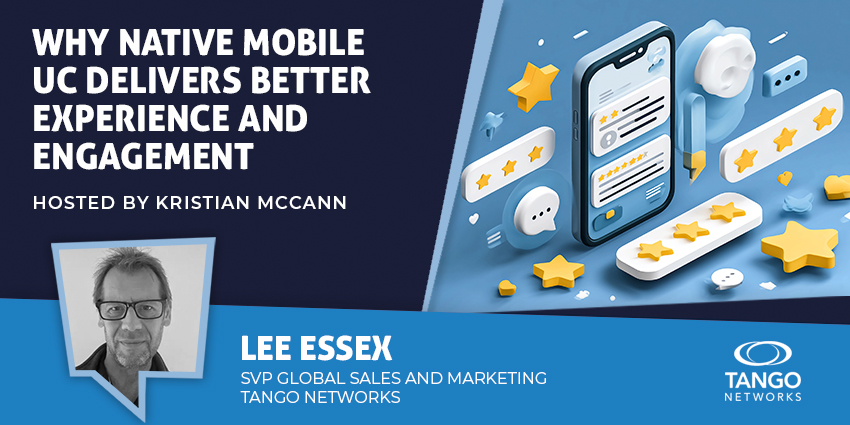Is it time to invest in RingCentral for enterprise? That depends. It’s hard to deny RingCentral’s leadership position in the Unified Communications market. This company has been a UCaaS Gartner Magic Quadrant leader for ten years in a row.
It’s also the brand that supports hundreds of some of the world’s biggest brands, from eBay to Office Depot, Vodafone Business, and even Reddit. But there’s really no one-size-fits-all UCaaS solution anymore. What makes RingCentral for Enterprise so compelling is how well it addresses the real problems bigger businesses face today.
If you want to streamline your bloated tech stack, tap into AI without hiring a new developer team, and handle compliance with confidence, RingCentral could be the answer.
Here, we’ll share an objective overview of RingCentral’s potential for the enterprise market to help you decide if it can contribute to your communication strategy.
- The Ultimate RingCentral Guide: Features, Pricing, and More
- Can RingCentral Receive Fax? Plus Other Lingering Questions You Need to Know
The Evolution of Unified Communications in 2025
Enterprise communications isn’t what it was five years ago. It’s not even what it was last year. Hybrid teams are evolving, AI is popping up in every app, and regulations are shifting fast. Companies considering RingCentral for Enterprise need to determine how it fits into the environment they’re dealing with today. Let’s start with the hybrid work conundrum.
Back in 2020, hybrid work was a scramble. Now it’s the standard blueprint. Large enterprises aren’t asking if their teams will work from different places; they’re asking how to make that experience better for everyone.
That’s a big ask. It means UC platforms need to be consistent, fast, secure, and flexible enough to support both the head office and someone working from a mountain cabin with patchy Wi-Fi. It also needs to work seamlessly with the tools companies already use. Integrated UC and contact center solutions are becoming a must-have, reducing costs and improving data insights.
Next, AI is becoming a major part of hybrid teams. AI is everywhere, summarizing and transcribing calls, detecting sentiment, automating busy work, and coaching teams in real time. Most companies want to take advantage but don’t want to reinvent the wheel or expose themselves to new risks.
Speaking of risks, compliance issues are becoming more complex. Whether it’s GDPR in Europe, HIPAA in healthcare, or any number of regional rules popping up across the globe, big companies are under pressure to get it right. Communication platforms that can’t meet those standards are automatically off the table.
RingCentral for Enterprise: The Growing Alignment
So, how does RingCentral for Enterprise address these changing priorities? In a lot of ways.
Let’s say you’re not starting from scratch. Most enterprise buyers aren’t. You’ve already got some Microsoft licenses. Maybe Zoom is hanging on somewhere. There’s a contact center team using something else entirely. It’s messy.
But if the goal is clarity, consolidation, and control, then RingCentral for enterprise can actually slot in without making you tear everything down.
Endless Scalability, Built In
RingCentral handles everything from a 10-person regional team to a 10,000-person global org. And it does it with one platform, not a Frankenstein mash-up of vendors and logins. You want one admin dashboard for voice, messaging, and video? RingCentral has you covered.
This is a company that’s constantly expanding its reach with things like Global RingEx Select and RingCX (recently rolled out in India). RingCentral also has a fantastic partnership network, perfect for companies in search of custom deployments and integrations.
Reliable Global Coverage
RingCentral for Enterprise isn’t just available globally. This is not a “let’s hope it works in Singapore” situation. RingCentral’s infrastructure is global, not just on paper but in practice. The Global Connect Network gives you localized phone services and regulatory compliance in over 40 countries, a major painkiller for IT leaders managing multi-region comms.
Every company gets a 99.999 percent uptime availability guarantee and access to end-to-end customer support. That’s one of the reasons RingCentral was named the number one cloud communications provider worldwide (according to Synergy).
Integrations Where it Counts
RingCentral provides companies with all the tools they need for both unified communications and contact center management in one ecosystem. If you want to align UCaaS and CCaaS without worrying about endless plugins and connectors, you can – but you’re also free to connect the dots.
RingCentral integrates seamlessly with Microsoft Teams, Salesforce, Google Workspace, Slack, ServiceNow; you name it. In fact, there are more than 500 applications to choose from, and the option to set up your own custom workflows.
Security and Compliance
RingCentral meets the standards enterprises care about, including GDPR, HIPAA, FINRA, and ISO 27001. But it’s doing a lot more than just checking boxes. RingCentral stays ahead of regulators and giving legal teams something they can actually sign off on, partnering with major industry players.
In Spring 2025, RingCentral partnered with PCI Pal to introduce enhanced payment security for its platform. It also invests in companies like Theta Lake. Combine that with the organization’s 7-layer security framework, and you have a powerful solution for safeguarding your business.
RingCentral for Enterprise: AI, Analytics, and Intelligence
Another big selling point of RingCentral for Enterprise is that it’s AI-focused. That doesn’t just mean RingCentral offers access to chatbots and virtual agents for customer self-service. AI solutions are available throughout the entire toolkit.
Starting with the basics, things like automatic call transcription, smart routing, and real-time call summaries are all included as standard. They don’t sound flashy, but they’re quietly powerful. Instead of spending fifteen minutes scribbling notes after every call, your team instantly gets a clean, accurate recap. Sales reps can move faster. Customer support teams get full context. Managers can finally see what’s actually happening on the ground.
Every company gets access to end-to-end conversation intelligence and sentiment analysis, for both internal and external conversations (RingSense). There are AI receptionists, coaching tools, and even AI tools that can help with managing events.
Then there’s the real-time analytics dashboard. You’re not just pulling reports. You’re tracking live activity, spotting bottlenecks, understanding usage patterns, and making changes on the fly. This isn’t a reporting tool; it’s operational intelligence.
All of these intelligent tools are designed specifically for enterprises, with customization options, built-in guardrails for AI safety, and, of course, an open ecosystem for connecting extra apps.
RingCentral for Enterprise: Use Cases Across Industries
All this is great in theory. But what does it actually look like when RingCentral for Enterprise is deployed in the wild? Here’s how some big names are putting it to work, not in a vacuum, but across the real messiness of enterprise life.
Healthcare
In Healthcare, RingCentral for Enterprise isn’t just saving companies time and money; it’s helping teams deliver better patient care. The Herfordshire Community NHS Trust, for instance, which is responsible for supporting more than 1.2 million patients, managed to reduce its in-call waiting times by 30 percent during peak hours and boost visibility into call analytics with RingCX.
According to the company, the trust can now deliver services that benefit both individuals and provider partners without unnecessary complexity or investment in additional resources. Elsewhere, Easton Dermatology Associates has saved 25 percent of the time managers spend on tasks with RingCentral and improved patient scores on reviews by 400 percent.
Retail and E-commerce
For fast-paced, enterprise-grade retail companies, RingCentral for Enterprise has become a force multiplier. Leading cosmetics and beauty brand Lush uses RingCentral for both unified communications and contact center operations. Since adopting the tech, the company has increased customer satisfaction ratings by 10 percent and saved a massive $20,000 per year. Plus, agents spend 3 hours a week on tasks thanks to RingCentral’s Zendesk integration.
RingCentral’s flexible, scalable technology makes it easy to support store managers, floor-based employees, and back-end staff in one unified environment. Store managers can now use mobile-first messaging to escalate issues, get real-time updates, and even loop in suppliers when needed. One comms platform, zero email chains, far fewer delays.
Finance
The finance industry is fast, chaotic, and highly regulated – perfect for RingCentral’s highly versatile, reliable, and efficient ecosystem of tools. One company, AUTOPAY, managed to save $500,000 per year by migrating its communication system to RingCentral. More importantly, the company’s call abandonment rate has dropped by three percent, saving hours with automation every week.
Glory also used RingCentral to centralize its global communications, something it believes will lead to a 30 percent reduction in costs and a 40 percent reduction in calls, thanks to RingCentral’s range of omnichannel self-service solutions. For finance companies moving to the cloud or just automating common tasks, RingCentral is a powerful choice.
Public Sector
In local government, flexibility and cost control are essential. As organizations continue to handle thousands of crucial interactions every day, they need a unified system for flawlessly managing everything. RingCentral for Enterprise delivers. Delaware County said switching to RingEX improved call experiences ten times and allowed them to manage 2,000 calls a day without painful and frustrating outages.
The Public Sector Partnership Services company even used RingCentral to enable hybrid working, streamline its transition into the cloud, and improve collaboration between internal teams. Today, the company said that it’s more “agile” than ever before and more capable of delivering exceptional service at scale.
Law and Legal Services
In the legal landscape, small and larger organizations alike are working with RingCentral to revolutionize efficiency and customer service. Legal Cheek, a company responsible for one of the UK’s largest legal websites, increased attendee numbers at its virtual fairs by 20 times with the help of RingCentral Events.
Howard Kennedy, a trusted legal advocate serving customers worldwide, has grown from a UK market leader to a global name with RingCentral’s flexible cloud-based calling solutions. It now has more than 400 employees and is no longer tied to desk phones.
Making RingCentral for Enterprise Work for You
RingCentral for Enterprise doesn’t demand that you drop your entire tech stack and rebuild from scratch. In fact, that would be a terrible idea. That’s part of what makes it such an attractive vendor for larger organizations with huge existing investments.
RingCentral is designed to work well with others. It offers direct routing and embedded calling. Your users can stay in Teams while calls are handled by RingCentral’s infrastructure. The result is better uptime, better quality, and fewer support tickets.
Heavily invested in Salesforce? RingCentral’s deep CRM integrations, especially with RingCX embedded into Salesforce’s Service Cloud, mean your sales and support teams can place calls, view call history, and manage customer conversations without ever leaving the CRM screen.
The main thing is that RingCentral for Enterprise doesn’t box you in. You can roll it out in phases, keep existing tools that are working, and replace only what’s broken. It’s designed for modular deployments. You want to call through RingCentral, but message through Slack? You’re in control.
RingCentral even supports hybrid environments (half on-premises, half in cloud, etc). You don’t have to migrate fully into the cloud immediately. You can mix and match your ecosystem to suit your specific needs, without worrying about extra complexity.
Key Questions to Ask When Considering RingCentral for Enterprise
We’re not here to tell you that RingCentral for Enterprise is a fit for every company. Every business has its own unique needs. So, before you dive into an RFP or send out demo invites, start with some brutally honest questions.
Is Our Structure Built For It?
Do you operate in multiple countries? Do your regional offices have different compliance requirements? Are your teams fully remote, office-based, or somewhere in between?
If the answer is “yes” to most of the above, RingCentral’s global backbone, localized services, and flexible deployment models will make life much easier.
What Needs To Stay, And What Needs To Go?
You don’t have to rip out every legacy system overnight. But you do need to know which parts of your current stack are holding you back. Can RingCentral integrate with them? (Usually, yes.) Should you migrate everything or phase it? That depends on your team’s bandwidth and tolerance for disruption. Work with RingCentral to find a strategy that works for you.
What Does Onboarding At Scale Really Look Like?
You’re not deploying this to a team of 12. You’re rolling it out to hundreds, maybe thousands. So ask: What kind of training is included? How smooth is the migration? What tools are in place to support change management?
RingCentral has onboarding teams, migration support, and documentation at scale, but it’s worth digging into what that looks like for your exact structure.
Does Their Roadmap Align With Ours?
This is where many UC vendors fall flat. You need a partner whose future matches your own. AI is moving fast. Security threats evolve by the week. Ask to see RingCentral’s product roadmap. See how their plans for AI, integrations, analytics, and compliance line up with your 18-to-36-month strategy.
Worth noting: they’ve just passed 1,000 customers using RingCX and the AI Receptionist combo. That makes it pretty clear that RingCentral is committed to bringing AI to the masses. So if you’re looking for integrations, AI, and flexibility, RingCentral might be perfect.
Could RingCentral for Enterprise Work for You?
After all that, the question still stands: Is RingCentral for Enterprise the right move for your organization? Maybe. Maybe not. But it’s worth a serious look if your comms stack is bloated, fragmented, or just not cutting it.
This vendor doesn’t promise to be everything for everyone. What it does offer is flexibility, reliability, and a practical approach to UC that’s built for real enterprise complexity. If you want to connect the dots between systems (particularly UCaaS and CCaaS), manage hybrid environments, and embrace AI and innovation without compliance headaches, RingCentral is a great pick.
Perhaps even more importantly, RingCentral doesn’t demand that you burn down what’s already working. It lets you build around what you’ve got, phase out what’s broken, and gradually consolidate into something stronger, cleaner, and much easier to run.
If you’re mapping out your UC strategy for the next one, three, or five years, especially if you’re juggling legacy systems, hybrid work, or multiple regions, then it’s time to ask the deeper questions. Not “which vendor has the most features,” but “which one makes life better for IT, simpler for users, and smarter for the business?”







